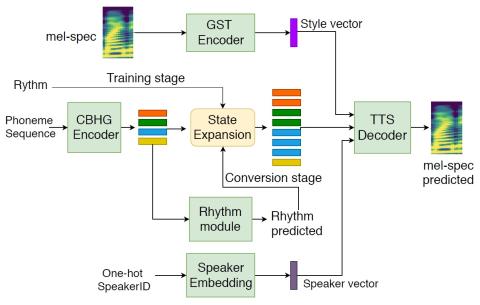Voice conversion (VC) techniques aim to modify speaker identity of an utterance while preserving the underlying linguistic information. Most VC approaches ignore modeling of the speaking style (e.g. emotion and emphasis), which may contain the factors intentionally added by the speaker and should be retained during conversion. This study proposes a sequence-to-sequence based non-parallel VC approach, which has the capability of transferring the speaking style from the source speech to the converted speech by explicitly modeling. Objective evaluation and subjective listening tests show superiority of the proposed VC approach in terms of speech naturalness and speaker similarity of the converted speech. Experiments are also conducted to show the source-style transferability of the proposed approach.
Conclusions
In this study, we have presented a source-speaking-style transferable non-parallel VC approach. We incorporate a rhythm module into the sequence-to-sequence VC model, resulting in PER of 5.6% in the converted speech. Subjective listening tests have also shown its superiority in VC performance in terms of speech naturalness and speaker similarity of the converted speech. We adopt a GST encoder for style inference from the source/reference speech. Experimental results validate the source-style transferability of the proposed approach. This study is an initial attempt to model speaking style for VC. Our future work includes disentangling speaking style, linguistic information and speaker identity from the source speech effectively in an unsupervised way.

